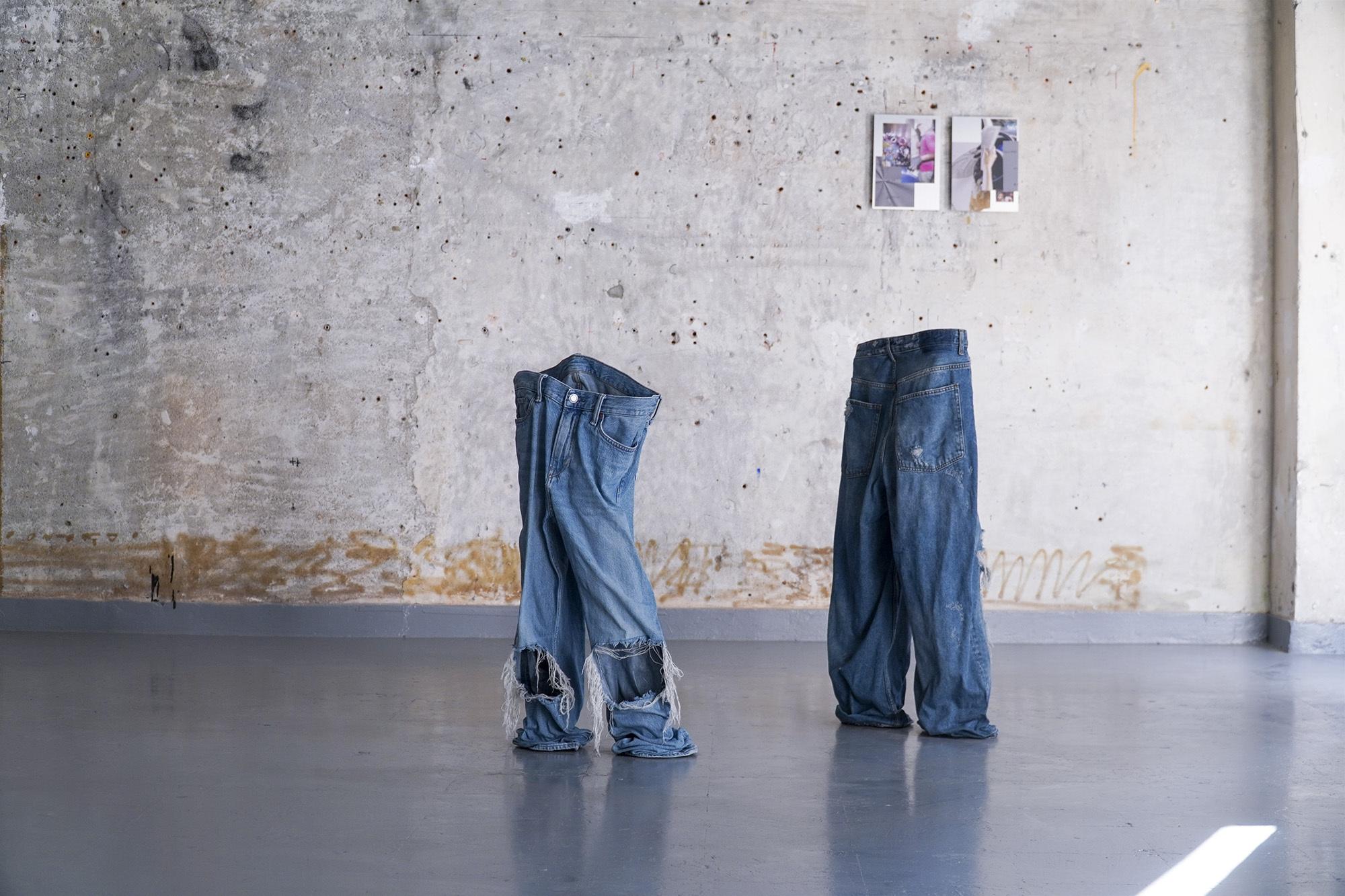distress
Atelier 35, Bucharest, Romania
22.02.23 - 20.03.23
You‘re early. You pass and try and peer in. You see only your own reflection. A moving blur.
You should have worn the other shoes. They’re more you. It’s too late now.
How are you ever going to be someone?
You’re one of the injured. One of the wounded.
All you need is some time. Time to heal.
But it takes so much work.
You’re meant to be an influence. That’s what you call yourself - “influencer”.
Under constant pressure, and strong self-hatred, you influence. You hate your boss, yet you have none. You are your own boss. That’s the way to do it.
Work. Work it. Work to be a winner.
You.
One of the injured, one of the wounded.
An influence.
Through a series of new sculptures, artist duo Nilz Källgren and Wilf Speller continue their exploration of contemporary labour aesthetics, exploring the material boundaries of identity and the bondage inherent in the project of the self. A self is endless, and continuously demands realisation and further exploration. This is the hegemony of psychopolitical atomisation, in which one embodies both master and subject.
Denim is a product of the industrial era, in both its manufacturing and its use as workwear. Today, the evidence of such labour is aesthetically echoed and appropriated through processes of factory distressing in which the jeans undergo an accelerated and concentrated process of wear designed to simulate the labour of the factory floor. It is important not to forget that this accelerated wear generally is undertaken by actual labourers in factories predominantly in the Global South (although increasingly challenged by automated processes). Appropriating the symbols of traditional labour has become a bland motif within the aesthetics of what can be understood as the proletariat of the psychopolitical era; influencers and content creators. Are distressed jeans a cry to acknowledge these new forms of labour that leave their workers wounded mentally, rather than physically?
Dreams of automation are animated into subjects – ambiguously rising or dying in the face of our current combined and uneven end times. The resulting sculptures are anthropomorphic inanimate objects – seemingly subjects, or characters with agency. They are ‘living dead,’ mirroring the aesthetics of the zombie apocalypse-boom as a mainstream phenomenon, simultaneously questioning claims of freedom of choice in algorithmically controlled ‘public’ space.
Where do you end?














